How to freeze, store and thaw foods for maximum nutrition, safety, flavor and texture.
Posted in Food & Nutrition on September 26, 2012. Last modified on April 30, 2019. Read disclaimer.
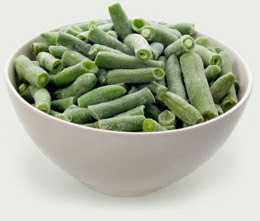
Nearly any foods (frozen meats, fruits, vegetables and baked goods) can be successfully frozen, experiencing little or no loss of nutrients or quality.* There are, however, several important factors to consider when freezing foods: food age, preparation, wrapping, storage and thawing.
*Examples of foods which should not be frozen are canned foods and eggs in their shells. Metal cans, glass jars and egg shells may crack as their contents swell, due to water expansion. Not only does this result in a messy freezer, the cracks allows bacteria to enter the foods. Other poor candidates for freezing are those that become visually and texturally unappetizing such as lettuces, radishes, cucumbers and green onions.
The Principle Behind Freezing Foods:
Microorganisms like bacteria, yeasts and molds thrive in unfrozen or unrefrigerated foods and eventually result in food spoilage. Such foods may cause food borne illnesses if consumed. Microbe activity decreases significantly, however, at temperatures below 40°F. (This is why refrigerators should always be set to 40°F or below.) At 0°F, these microorganisms - though still alive and viable - become inactive and no longer replicate until the temperature begins rising. That's why the same amount of care must be taken when thawing foods as when freezing them.
+ Free Shipping & Returns on Eligible Items.
(*Amazon's Top 100 list updated hourly.)
6 Factors that effect the quality of foods you store in the freezer:
1. Original Freshness: Fresh foods simply look more appealing, taste better and have higher nutritional value. So, if you know that you will eventually be freezing them, the sooner they are frozen, the better.
2. Controlling Enzyme Activity: Enzymes naturally occur in all foods and are needed for plant growth, ripening and aging. Left unchecked, however, the enzymes result in food spoilage. Freezing slows enzyme activity -- though it does not halt it entirely. While enzyme activity does not effect frozen meats or fish and it is neutralized in frozen fruits by their naturally occurring acids, active enzymes can degrade flavor, color, texture and nutritional value of frozen vegetables in as little as a few weeks. To prevent this, it is best to blanch (scald) vegetables prior to freezing. When blanching vegetables, the goal is to heat them long and hot enough to destroy the enzymes but not too much. Over blanched vegetables become cooked and more closely resemble leftovers rather than garden-fresh produce. A rule of thumb is to drop the fresh vegetables into a blanching basket and submerge them in boiling water. With the burner on high setting and pot covered, the water should return to a boil within 1 minute. How long to keep the vegetables submerged depends on the vegetables, usually ranging from 1 to 3 minutes. (Refer to the Suggested Blanching Times chart at bottom of this page for specific times.) Once blanched, vegetables should be quickly cooled by plunging the basket into a large pot of ice water for the same amount of time they boiled. Remove and drain thoroughly.
Did You Know?
Thawed foods can safely be refrozen (though flavor, color and texture may suffer due to moisture loss during thawing).Just be certain that thawed foods have been refrigerated for no more than 3-4 days, exposed to room temperature for less than 2 hours, or placed in temperatures over 90°F for less than 1 hour.
3. Freezer Packaging: In order to prevent "freezer burn", it is important to choose containers that keep air out and moisture in. While freezer burned foods are still safe to each, the resulting toughness and loss of flavor may render them unappetizing or suitable only for soups or casseroles. If using solid freezer containers, leave a half-inch of space at the top for expansion. When using freezer bags, squeeze all excess air from the bag before sealing. (While it is safe to freeze meats and poultry in their original packaging from the grocer, these wraps breathe so they are no a good choice for long-term storage.)
4. How Quickly the Foods Get Frozen: The faster foods become thoroughly frozen, the better. Slow freezing allows the formation of large ice crystals which damage the cells of the food and cause them to loose excess juice and moisture during thawing and cooking. Foods should be completely frozen within 2 hours. To expedite the freezing process, never stack foods in the freezer. It is better to spread them out until completely frozen.
5. Length of Storage in Freezer: While foods will remain safe as long as they are held under 0°F -- taste, texture and color can be effected. (The USDA offers a Maximum Freezer Storage chart, listed at the bottom of this page.) 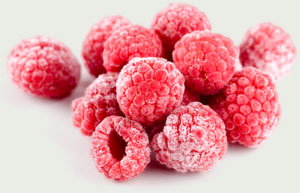
6.Thawing method: There are only three safe methods for thawing frozen foods: 1) slowly in the freezer (preferred method), 2) sealed in a leak-proof plastic bag and submerged in cold water (with the water changed every half hour or so to prevent bacteria growth), and 3) in the microwave. Microwave thawed foods should be cooked immediately because it is likely that some of the food will become warm and may begin to cook.
When foods are thawed slowly in the refrigerator, the moisture from ice crystals that formed during freezing is more likely to reabsorb into the food rather than leak out.
While consuming freshly picked foods is always desirable. For those times when storage makes sense, proper freezing and thawing is a safe, easy, inexpensive food storage alternative that results in great tasting meals.
| Sampling of Suggested Blanching Times | |
| Vegetable |
Minutes |
| Asparagus (Medium Stalk) |
3 |
| Beans-Snap, Green, or Wax | 3 |
| Broccoli (11/2 inch flowerets) |
3 |
| Brussel Sprouts (Medium Heads) | 4 |
| Cauliflower (1 inch flowerets) | 3 |
| Corn (on the cob) Medium Ears Large Ears |
9 11 |
| Greens (Collards) | 3 |
| Peas-Edible Pod | 1 1/2-3 |
| Peas-Green | 1 1/2 |
| Peppers-Sweet (Strips or Rings) | 2 |
| Potatoes-Irish (New) | 3-5 |
| Pumpkin | cook |
| Squash-Summer | 3 |
| Squash-Winter | cook |

| Maximum Freezer Storage Times | |
| Item | Months |
| Bacon and Sausage | 1 to 2 |
| Casseroles | 2 to 3 |
| Egg whites or egg substitutes | 12 |
| Frozen Dinners and Entrees | 3 to 4 |
| Gravy, meat or poultry | 2 to 3 |
| Ham, Hotdogs and Lunchmeats | 1 to 2 |
| Meat, uncooked roasts | 4 to 12 |
| Meat, uncooked steaks or chops | 4 to 12 |
| Meat, uncooked ground | 3 to 4 |
| Meat, cooked | 2 to 3 |
| Poultry, uncooked whole | 12 |
| Poultry, uncooked parts | 9 |
| Poultry, cooked | 4 |
| Soups and Stews | 2 to 3 |
References:
Freezer Shelf Life chart: http://www.fsis.usda.gov/fact_sheets/Focus_On_Freezing
Blanching Times chart: http://www.uga.edu/nchfp/how/freeze/blanching.html
Food Freezing Basics from NDSU Extension Service: http://www.ag.ndsu.edu/pubs/yf/foods/fnw614.htm
 How being in love can effect our health
How being in love can effect our health How to cut onions without crying
How to cut onions without crying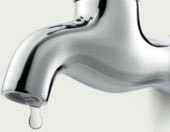 Hidden toxins in our homes and schools
Hidden toxins in our homes and schools Strategy for success with New Years resolutions
Strategy for success with New Years resolutions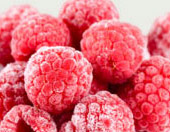 Tips for properly freezing foods
Tips for properly freezing foods Importance of strength training for seniors
Importance of strength training for seniors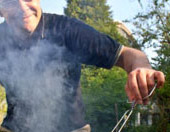 BBQ health and safety tips
BBQ health and safety tips Attracting butterflies to your garden
Attracting butterflies to your garden Teaching values to our kids
Teaching values to our kids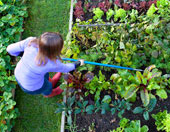 Guide to beginning a vegetable garden
Guide to beginning a vegetable garden Attracting birds and hummingbirds
Attracting birds and hummingbirds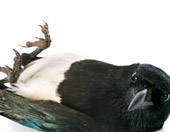 How to prevent birds from flying into glass windows
How to prevent birds from flying into glass windows When to take a child to the hospital
When to take a child to the hospital